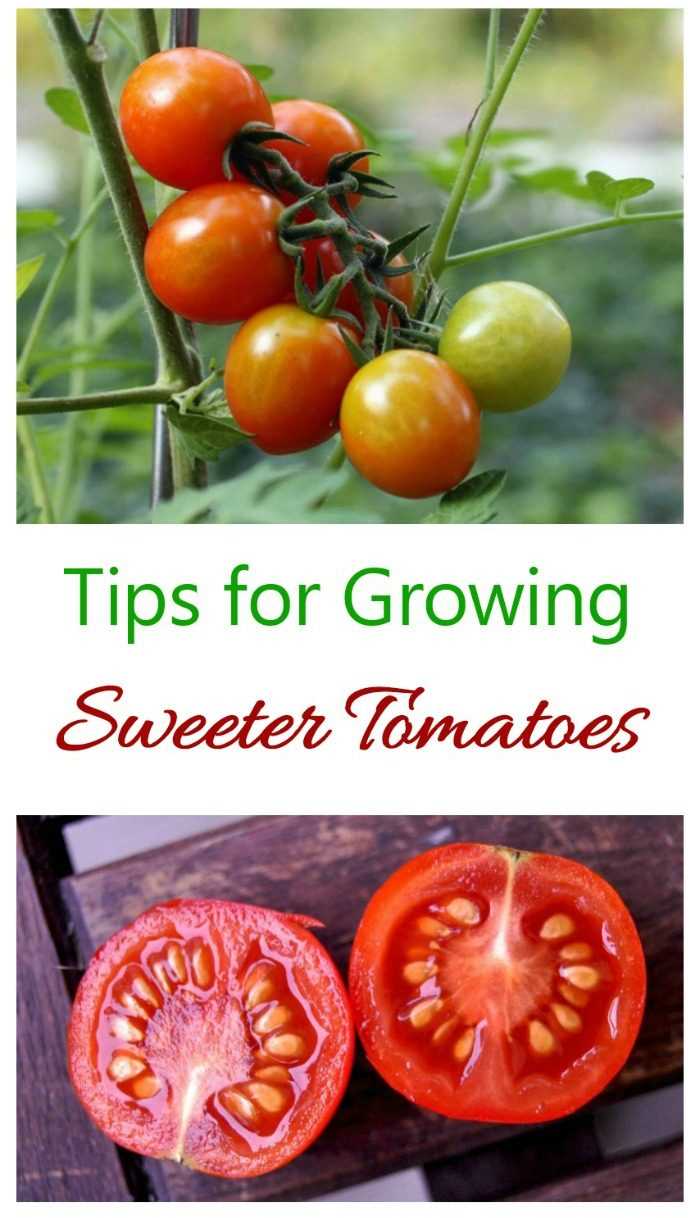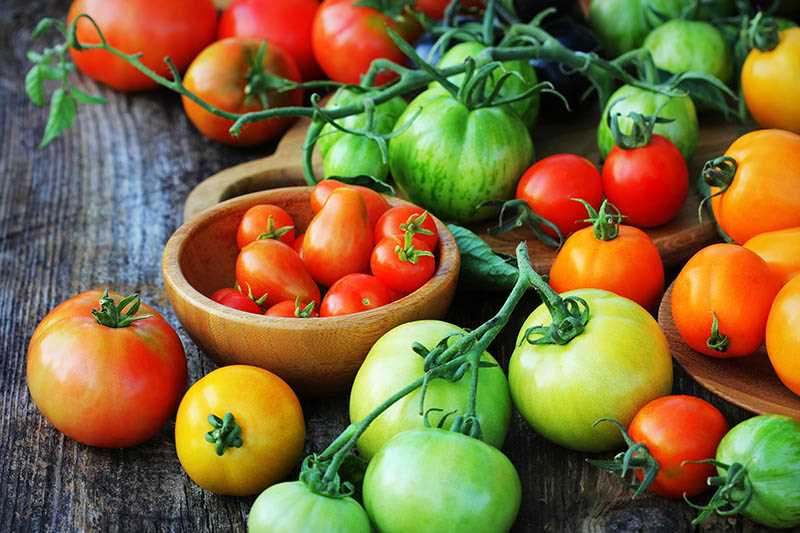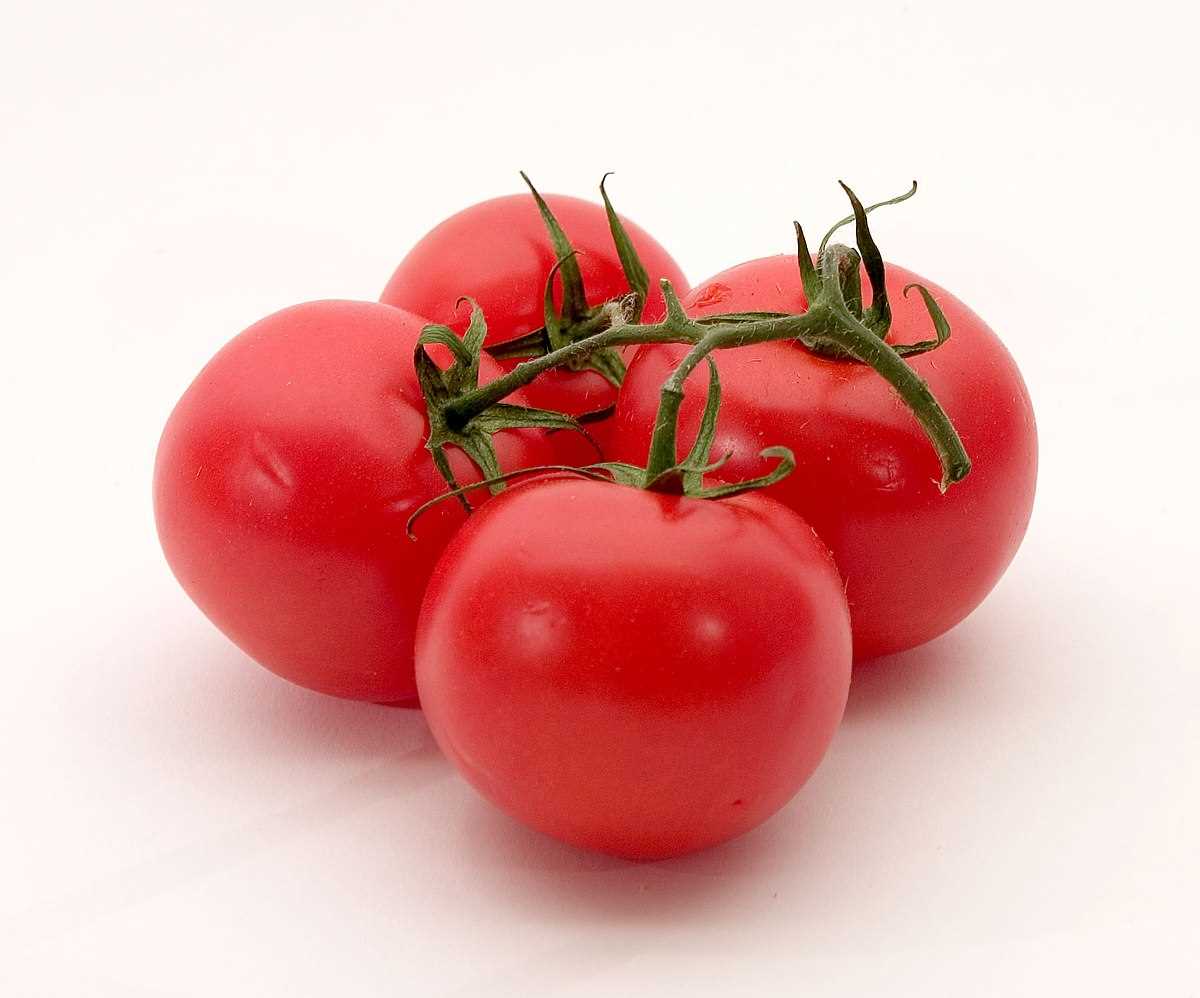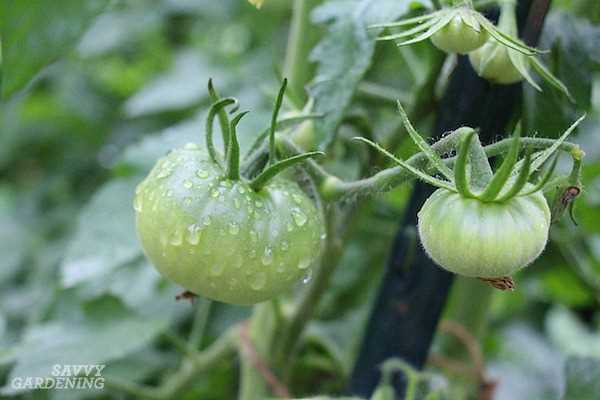- The Importance of Proper Nutrition for Tomatoes
- 1. Growth and Development
- 2. Enhanced Flavor
- 3. Disease Resistance
- 4. Larger Fruit Size
- 5. Increased Crop Yield
- Conclusion
- Choosing the Right Fertilizer for Sweet and Large Tomatoes
- 1. Nitrogen Content
- 2. Phosphorus and Potassium Content
- 3. Slow-Release Formulation
- 4. Organic vs. Synthetic
- 5. Micronutrients
- 6. Application Method
- 7. Soil Testing
- Feeding Schedule for Optimal Tomato Growth
- 1. Pre-Planting
- 2. Seedling Stage
- 3. Flowering and Fruit Development Stage
- 4. Fruit Ripening Stage
- 5. Supplemental Feeding Tips
- Watering Techniques to Enhance Tomato Flavor
- 1. Deep and Infrequent Watering
- 2. Water at the Base
- 3. Mulching
- 4. Water in the Morning
- 5. Monitor Soil Moisture
- 6. Consider Drip Irrigation
- Organic Methods to Increase Sweetness and Size of Tomatoes
- 1. Choose the Right Tomato Variety
- 2. Provide Adequate Sunlight
- 3. Use Organic Fertilizers
- 4. Mulch Your Tomato Plants
- 5. Water Regularly
- 6. Prune and Stake Your Tomato Plants
- 7. Practice Crop Rotation
- 8. Provide Adequate Space
- Common Mistakes to Avoid When Feeding Tomatoes
- “Question-Answer”
- How can I make my tomatoes sweeter and larger?
- What is the best way to water tomato plants?
- Should I remove the suckers from my tomato plants?
- What type of fertilizer should I use for tomatoes?
- How can I protect my tomatoes from pests and diseases?
- “Video” If I Could ONLY Grow 7 Tomato VARIETIES for the Rest of My Life, These are My Choices!
Tomatoes are a staple in many kitchens, adding a burst of color and flavor to countless dishes. But have you ever wondered how to make your tomatoes sweeter and larger? Look no further – we’ve got you covered with these essential feeding tips!
1. Nourish the Soil: One of the most important factors in growing sweet and large tomatoes is starting with nutrient-rich soil. Make sure to amend your soil with organic matter, such as compost or well-rotted manure, before planting. This will provide the necessary nutrients for healthy growth.
2. Provide Adequate Water: Tomatoes need consistent moisture to thrive, especially during the growing season. Water deeply and regularly, ensuring that the soil is evenly moist but not waterlogged. A drip irrigation system or soaker hose can be a great way to deliver water directly to the roots.
3. Use Fertilizer: In addition to nourishing the soil, tomatoes benefit from regular feeding with a balanced fertilizer. Look for a fertilizer specifically formulated for tomatoes, as it will have the right combination of nutrients, like nitrogen, phosphorus, and potassium, to promote healthy growth and fruit development.
4. Mulch, Mulch, Mulch: Mulching around your tomato plants not only helps to conserve moisture, but it also suppresses weeds and regulates soil temperature. Use organic mulch, such as straw or shredded leaves, to create a protective layer around the base of the plants.
5. Prune and Support: Proper pruning and support can help redirect the plant’s energy towards fruit production. Remove any suckers that develop in the leaf axils and use stakes, cages, or trellises to support the plants as they grow. This will prevent the fruits from touching the ground and reduce the risk of disease.
Remember, growing sweet and large tomatoes takes time and patience. By following these essential feeding tips, you’ll be well on your way to enjoying a bountiful harvest of delicious tomatoes!
The Importance of Proper Nutrition for Tomatoes

Proper nutrition is essential for growing sweet and large tomatoes. Without the right nutrients, tomatoes may not develop their full flavor, size, and quality. Here are some key reasons why providing proper nutrition is important for tomatoes:
1. Growth and Development

Tomatoes require a variety of essential nutrients for their growth and development. These nutrients include nitrogen, phosphorus, potassium, calcium, magnesium, and various trace elements. Each nutrient plays a specific role in the plant’s growth, such as stimulating root development, promoting flower and fruit production, and enhancing overall plant vigor.
2. Enhanced Flavor
Adequate nutrition is crucial for enhancing the flavor of tomatoes. Certain nutrients, such as phosphorus and potassium, play a significant role in enhancing the taste and sweetness of tomatoes. By providing these nutrients, you can ensure that your tomatoes have a delicious, rich flavor that is enjoyable to eat.
3. Disease Resistance
Proper nutrition can also help improve the disease resistance of tomato plants. Nutrients like calcium and magnesium help strengthen cell walls, making the plants less susceptible to diseases such as blossom end rot. Additionally, a healthy and well-nourished plant is better able to fight off pests and diseases, ensuring a higher yield of quality tomatoes.
4. Larger Fruit Size
Tomatoes grown with proper nutrition tend to produce larger fruits. Nutrients like potassium and phosphorus help stimulate fruit development and increase fruit size. By providing these nutrients in the right amounts, you can enjoy bigger, better-looking tomatoes that will make your harvest more satisfying.
5. Increased Crop Yield
Providing proper nutrition to tomatoes can significantly increase crop yield. Nutrient deficiencies can limit the plant’s ability to produce fruits, resulting in a lower yield. By ensuring that your tomatoes receive the right balance of nutrients, you can maximize their productivity and get a higher number of healthy, ripe tomatoes.
Conclusion
Proper nutrition is vital for growing sweet and large tomatoes. By providing the right balance of essential nutrients, you can promote the growth and development of your tomato plants, enhance their flavor, increase disease resistance, and improve the overall quality and yield of your harvest. Investing in proper nutrition for your tomatoes is a simple yet effective way to ensure a successful and bountiful crop.
Choosing the Right Fertilizer for Sweet and Large Tomatoes

Growing sweet and large tomatoes requires the use of the right fertilizer. Here are some important factors to consider when choosing the best fertilizer for your tomato plants:
1. Nitrogen Content
Nitrogen is a vital nutrient for plant growth and is essential for leaf and stem development. However, too much nitrogen can result in excessive foliage growth and less fruit production. Look for a fertilizer with a balanced nitrogen content to promote overall plant growth while still focusing on fruit development.
2. Phosphorus and Potassium Content
Phosphorus and potassium play crucial roles in promoting strong root development, flower formation, and fruit production. Look for a fertilizer with higher levels of phosphorus and potassium to support these essential processes.
3. Slow-Release Formulation
Consider using a slow-release fertilizer that provides a steady supply of nutrients over an extended period. This helps prevent nutrient leaching and ensures your tomato plants receive a consistent supply of nutrients for optimal growth and fruit development.
4. Organic vs. Synthetic
Choose between organic and synthetic fertilizers based on your preferences and gardening practices. Organic fertilizers are derived from natural sources and release nutrients slowly, which can benefit soil health in the long run. Synthetic fertilizers, on the other hand, provide nutrients more rapidly and may require more frequent applications.
5. Micronutrients
In addition to the major nutrients mentioned above, tomato plants also require trace amounts of micronutrients such as iron, zinc, and manganese. Look for a fertilizer that contains a balanced blend of micronutrients to ensure your plants have all the resources they need for healthy growth and development.
6. Application Method
Different fertilizers come in various forms, including granules, powders, and liquids. Consider the ease of application and your preferred gardening style when choosing a fertilizer. Granular and powdered fertilizers are typically spread around the base of the plants, while liquid fertilizers can be applied through foliar sprays or added to the soil.
7. Soil Testing
Before selecting a fertilizer, it’s always a good idea to test your soil’s nutrient levels. A soil test can help determine any deficiencies or imbalances, allowing you to choose the most appropriate fertilizer to meet your tomato plants’ specific needs.
By considering these factors and choosing the right fertilizer for your sweet and large tomatoes, you can provide your plants with the essential nutrients they need for vigorous growth, abundant fruit production, and incredible sweetness.
Feeding Schedule for Optimal Tomato Growth
Feeding tomatoes properly is essential to ensure their optimal growth and maximize the sweetness and size of the fruits. Here is a feeding schedule to follow:
1. Pre-Planting
- Prepare the soil by adding organic matter, such as compost or well-rotted manure, to improve its fertility.
- Incorporate a slow-release fertilizer into the soil, following the manufacturer’s instructions.
2. Seedling Stage
- Feed the tomato seedlings with a balanced liquid fertilizer, diluted according to the package instructions, every two weeks.
- Apply a nitrogen-rich fertilizer, such as fish emulsion, one week after transplanting to promote strong vegetative growth.
3. Flowering and Fruit Development Stage
- Switch to a high-phosphorous fertilizer, such as a tomato-specific fertilizer or a bone meal-based fertilizer, to encourage flower formation and fruit development.
- Apply the high-phosphorous fertilizer every two to three weeks until the fruit starts to ripen.
4. Fruit Ripening Stage
- Reduce the frequency of feeding to once every four to six weeks, as the tomatoes reach maturity.
- Continue using a balanced liquid fertilizer to provide the necessary nutrients for the plants.
5. Supplemental Feeding Tips
To further enhance tomato growth and sweetness, consider the following:
- Apply compost tea or organic liquid fertilizers, such as kelp extract or fish emulsion, as a foliar spray once a month.
- Ensure the plants receive adequate water, as tomatoes have a high water requirement for optimal growth.
- Monitor the plants for signs of nutrient deficiency, such as yellowing leaves, and adjust the feeding schedule accordingly.
- Avoid overfeeding the plants, as excessive fertilizer application can lead to excessive vegetative growth and reduced fruit production.
By following this feeding schedule and providing the necessary nutrients at each growth stage, you can promote optimal tomato growth, leading to sweeter and larger fruits.
Watering Techniques to Enhance Tomato Flavor
Watering is a critical aspect of growing tomatoes as it directly affects the flavor and size of the fruit. Here are some watering techniques that can help enhance the flavor of your tomatoes:
1. Deep and Infrequent Watering
Instead of frequent light watering, it is better to provide deep and infrequent watering to tomatoes. This encourages the roots to grow deeper, resulting in stronger plants with more intense flavor. Water the plants once or twice a week, depending on the weather conditions and soil moisture.
2. Water at the Base

When watering tomatoes, it is essential to target the base of the plants rather than the leaves. Watering from above can lead to moisture on the leaves, which creates an ideal environment for diseases. Direct the water towards the soil around the plant’s base, allowing the roots to absorb moisture efficiently.
3. Mulching
Mulching is the process of applying a layer of organic material, such as straw or wood chips, around the base of the tomato plants. Mulch helps retain moisture in the soil, reducing the need for frequent watering. Additionally, it also prevents weed growth, which can compete with the plants for water and nutrients.
4. Water in the Morning
Watering your tomatoes in the morning is generally recommended as it allows the leaves to dry out during the day. Moisture on the leaves for an extended period can increase the risk of fungal diseases. Watering in the morning ensures that the plants have sufficient time to dry before nightfall.
5. Monitor Soil Moisture
Regularly monitor the moisture level of the soil to avoid overwatering or underwatering your tomato plants. Stick your finger about an inch into the soil, and if it feels dry, it’s time to water. If the soil feels consistently wet, you may be overwatering the plants, which can dilute the flavor of the fruit.
6. Consider Drip Irrigation
Drip irrigation is an efficient watering system that delivers water directly to the roots of the plants. This method reduces water waste and ensures that the plants receive a consistent water supply. Drip irrigation also helps prevent moisture on the leaves, promoting healthier plants and better flavor.
By implementing these watering techniques, you can help enhance the flavor of your tomatoes and grow large, delicious fruits. Remember to adjust the watering schedule based on the specific needs of your plants and the environmental conditions in your area.
Organic Methods to Increase Sweetness and Size of Tomatoes
When it comes to growing tomatoes, many gardeners are looking for ways to make their tomatoes sweeter and larger. While there are several fertilizers and techniques available on the market, organic methods can be just as effective, if not more. Here are some organic methods you can try to enhance the sweetness and size of your tomatoes:
1. Choose the Right Tomato Variety
The type of tomato you choose to grow can make a big difference in its sweetness and size. Look for tomato varieties that are known for their sweetness, such as heirloom tomatoes or cherry tomatoes. These varieties tend to have a higher sugar content, resulting in sweeter tomatoes.
2. Provide Adequate Sunlight
Tomatoes need plenty of sunlight to produce sugars and grow to their full size. Make sure your tomato plants are getting at least 6-8 hours of direct sunlight every day. If your garden doesn’t receive enough sunlight, consider using reflective mulch or planting in containers that can be moved to a sunnier location.
3. Use Organic Fertilizers
Organic fertilizers can provide the necessary nutrients for your tomato plants without the use of synthetic chemicals. Compost, manure, and seaweed extracts are all excellent choices for organic fertilizers. Apply these fertilizers to the soil before planting and throughout the growing season to ensure your tomatoes receive a steady supply of nutrients.
4. Mulch Your Tomato Plants
Applying mulch around your tomato plants can help retain soil moisture, regulate temperature, and prevent weed growth. Organic materials like straw, grass clippings, or woodchips can be used as mulch. This helps create optimal growing conditions for your tomatoes, resulting in sweeter and larger fruits.
5. Water Regularly
Proper watering is crucial for the development of sweet and large tomatoes. Water your tomato plants deeply and consistently, ensuring the soil is evenly moist but not waterlogged. Avoid overwatering, as it can lead to fruit splitting and a diluted flavor.
6. Prune and Stake Your Tomato Plants
Pruning and staking your tomato plants can improve air circulation, reduce disease, and promote the growth of larger fruits. Remove any suckers that emerge from the leaf axils and use stakes or cages to support the plants. This allows the energy of the plant to be focused on producing larger, sweeter tomatoes.
7. Practice Crop Rotation
Rotating your tomato plants to different areas of your garden each year can help prevent soil-borne diseases and pests. This can lead to healthier plants and better-tasting tomatoes. Avoid planting tomatoes in the same spot year after year to maintain soil fertility and reduce the risk of diseases.
8. Provide Adequate Space
Plant your tomatoes with enough spacing between each plant to allow for proper airflow and sunlight penetration. Crowded plants can lead to poor air circulation, which can increase the risk of diseases and affect the sweetness and size of the tomatoes. Follow the spacing recommendations for the specific tomato variety you are growing.
By following these organic methods, you can enhance the sweetness and size of your tomatoes while avoiding the use of synthetic chemicals. Experiment with different techniques to find the methods that work best for your garden and enjoy the delicious, homegrown tomatoes that result!
Common Mistakes to Avoid When Feeding Tomatoes
- Overfeeding: One of the most common mistakes gardeners make is overfeeding their tomato plants. Excessive fertilization can lead to lush vegetative growth, but it often results in smaller fruits and a decrease in sweetness.
- Using an Imbalanced Fertilizer: Tomatoes require a balanced fertilizer with a ratio of nitrogen, phosphorus, and potassium (NPK) such as 10-10-10 or 14-14-14. Avoid using fertilizers with an imbalanced ratio, as it can cause an imbalance in plant growth and nutrient uptake.
- Feeding too Late: Tomatoes thrive on a consistent feeding schedule. It’s important to start feeding your plants early in the growing season and continue throughout its development. Feeding too late in the season can result in stunted growth and a decrease in fruit production.
- Underwatering: Proper hydration is crucial for tomato plants to absorb nutrients effectively. Underwatering can hinder the plant’s ability to take up nutrients, leading to poor fruit development and lower sweetness levels. Make sure to provide adequate water to your tomato plants.
- Overwatering: While underwatering can be detrimental, overwatering can be equally harmful. Excessive moisture in the soil can lead to root rot and disease development, ultimately impacting the quality and size of the tomatoes.
- Using Poor-Quality Soil: Tomatoes require well-draining soil that is rich in organic matter. Using poor-quality soil lacking essential nutrients can impede the plants’ ability to take up nutrients, resulting in small and tasteless fruits. Invest in good-quality soil or amend your existing soil with organic matter.
- Not Mulching: Mulching helps retain moisture in the soil, prevents weed growth, and maintains consistent soil temperature. Failure to mulch can lead to moisture fluctuations, stress on the plants, and a decrease in fruit quality.
- Ignoring pH Levels: Tomatoes prefer slightly acidic soil with a pH range of 6.0 to 6.8. Ignoring pH levels can hinder nutrient uptake and impact overall plant health. Regularly test your soil pH and amend accordingly to maintain optimal conditions for your tomatoes.
- Feeding Too Much Nitrogen: While nitrogen is essential for healthy plant growth, excessive nitrogen can result in excessive foliage growth at the expense of fruit production. Avoid overfeeding with nitrogen-rich fertilizers during the fruiting stage to encourage larger, sweeter tomatoes.
Avoiding these common mistakes when feeding tomatoes will help optimize their growth and maximize fruit quality. Remember to provide balanced feeding, proper watering, good-quality soil, and maintain optimal pH levels for the best results.
“Question-Answer”
How can I make my tomatoes sweeter and larger?
To make your tomatoes sweeter and larger, you can try a few proven methods. First, make sure to provide them with consistent watering and fertilization. This will help the plants develop strong root systems and encourage the production of larger fruits. Additionally, you can pinch off the suckers that develop in the leaf axils of tomato plants. This will direct more energy into the main stem, resulting in larger fruits. Lastly, try applying a balanced fertilizer that is high in potassium. This nutrient is known to enhance the sweetness of tomatoes.
What is the best way to water tomato plants?
The best way to water tomato plants is deeply and consistently. Tomato plants prefer regular watering rather than sporadic rainfall. It’s important to water at the base of the plant, avoiding wetting the leaves as this can promote diseases. Watering deeply, until the soil is thoroughly soaked, encourages the roots to grow deep into the soil, resulting in healthier and larger plants. Aim to water the plants once or twice a week, depending on the weather conditions and the moisture levels in the soil.
Should I remove the suckers from my tomato plants?
Yes, it is recommended to remove the suckers from tomato plants. Suckers are the small shoots that develop in the leaf axils of tomato plants. While they can grow into new branches, removing them allows the main stem of the plant to receive more nutrients and energy, resulting in larger and sweeter tomatoes. To remove the suckers, simply pinch them off using your fingers or pruners. Be careful not to remove the main stem or any flowering or fruit-bearing branches.
What type of fertilizer should I use for tomatoes?
When it comes to fertilizing tomatoes, it’s best to use a balanced fertilizer with a higher potassium content. Potassium is an essential nutrient for fruit development and enhances the sweetness of tomatoes. Look for a fertilizer with an N-P-K ratio of around 10-10-10 or 5-10-10. Alternatively, you can use organic fertilizers like compost or well-rotted manure. It’s important to follow the instructions on the fertilizer package and apply it according to the recommended dosage.
How can I protect my tomatoes from pests and diseases?
To protect your tomatoes from pests and diseases, there are several steps you can take. Firstly, practice good sanitation by removing any fallen leaves or debris from around the plants, as these can harbor pests and foster disease development. Secondly, consider using organic pest control methods such as companion planting or introducing beneficial insects like ladybugs or lacewings. Additionally, you can use organic or chemical-based sprays specifically designed to control common tomato pests and diseases. Lastly, monitor your plants regularly for any signs of pests or diseases and take appropriate action promptly.







